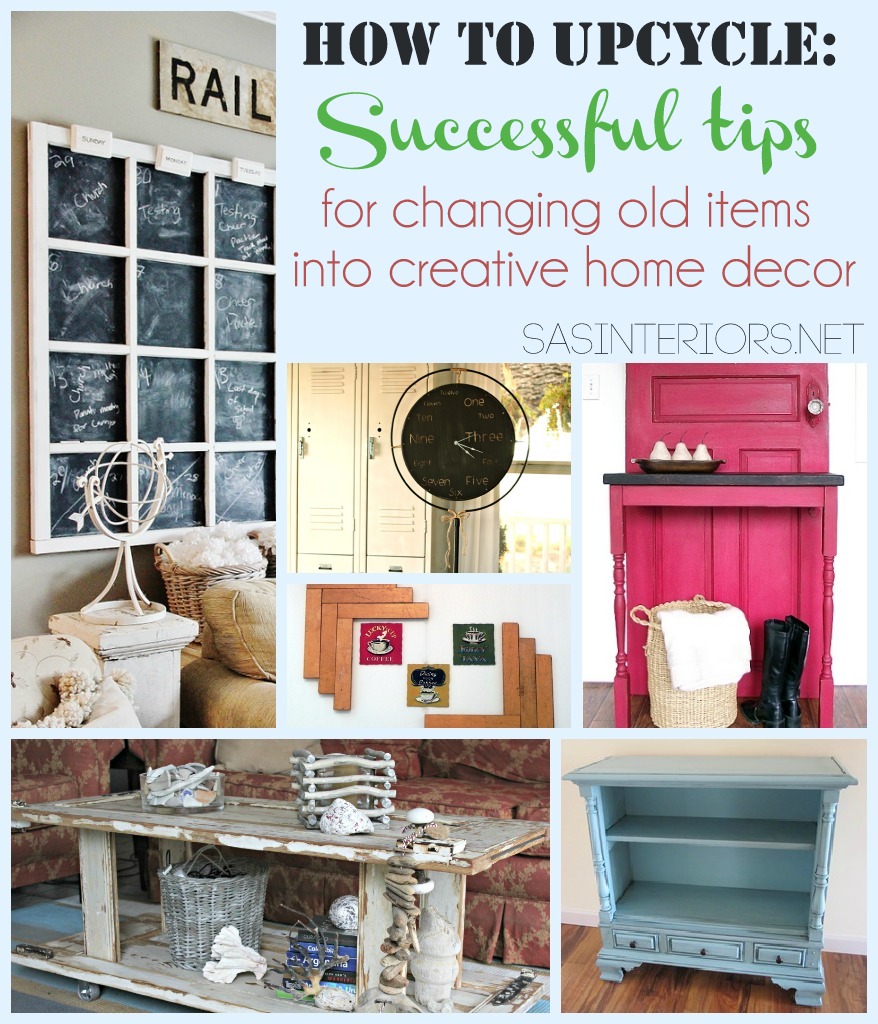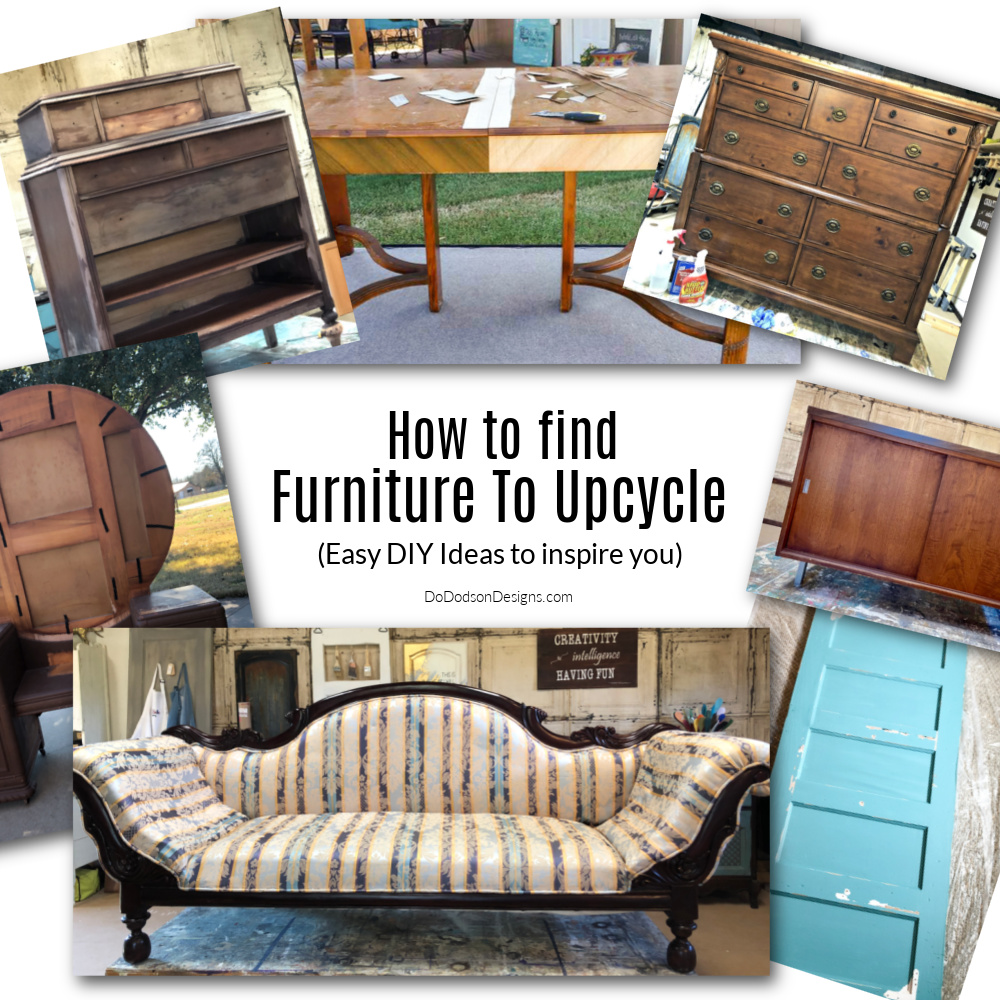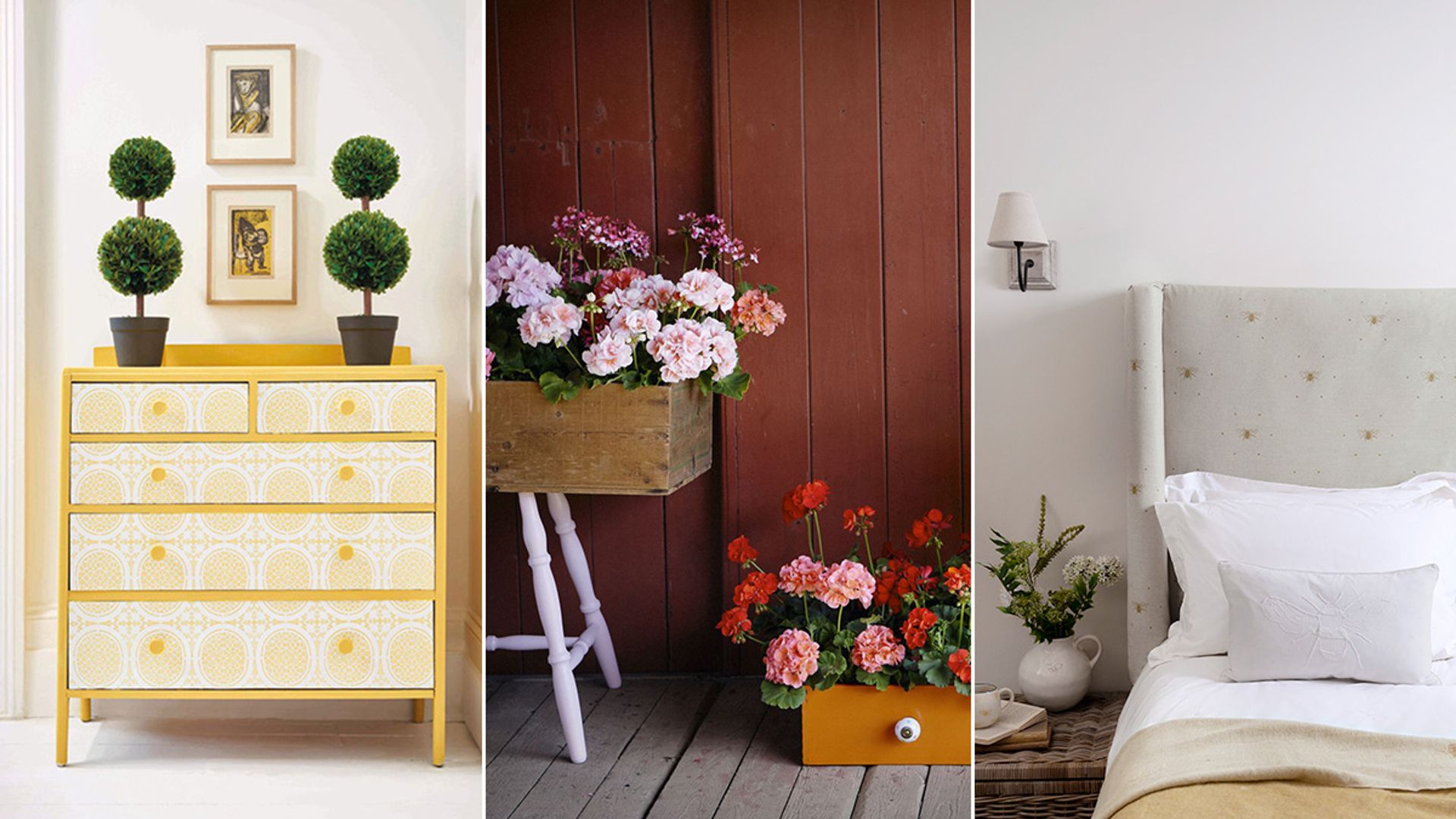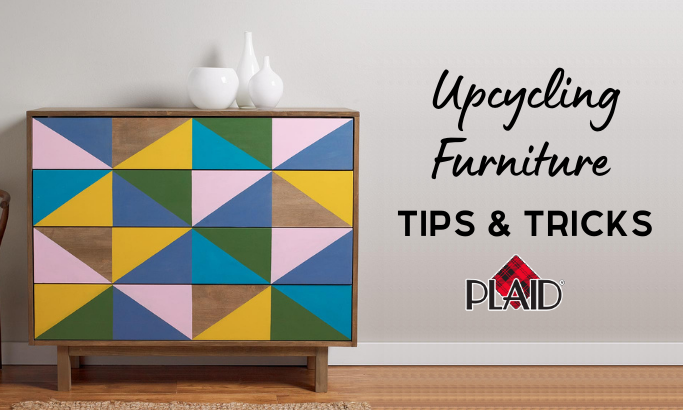Upcycling furniture breathes new life into old pieces, reducing waste and saving money. Use creativity to transform items into unique treasures.
Upcycling furniture is an excellent way to refresh your home decor while being environmentally conscious. This practice involves taking old, unwanted, or discarded furniture and creatively repurposing it. By doing so, you can reduce waste, save money, and add a personal touch to your living space.
With a bit of creativity and some basic tools, you can transform even the most worn-out pieces into stunning, functional items. Whether it’s painting, reupholstering, or adding new hardware, the possibilities are endless. Upcycling not only benefits the environment but also allows you to create one-of-a-kind pieces that reflect your style.

Credit: jennaburger.com
Introduction To Upcycling
Upcycling is about giving old items new life. It focuses on creativity and sustainability. Upcycling furniture is a great way to personalize your space. This post will guide you through the basics and benefits of upcycling furniture.
What Is Upcycling?
Upcycling means transforming old items into something new and useful. It differs from recycling, which breaks down items to make new materials. Upcycling retains the item’s original form but improves it. For example, turning an old door into a table is upcycling.
Benefits Of Upcycling Furniture
Upcycling furniture has many advantages. Here are some key benefits:
- Saves Money: You don’t need to buy new furniture.
- Eco-Friendly: It reduces waste and saves resources.
- Unique Style: Your home will have one-of-a-kind pieces.
- Creative Outlet: It’s a fun way to express creativity.
- Quality: Old furniture is often better made than new.
Consider these benefits the next time you want to refresh your space. Upcycling offers a sustainable, economical, and creative solution.

Credit: www.dododsondesigns.com
Choosing The Right Pieces
Choosing the right pieces for upcycling furniture can be exciting. The right item can transform your entire project. It’s important to know what to look for and where to find it.
Identifying Potential
Not all furniture is suitable for upcycling. Look for sturdy items. Avoid pieces with extensive damage. Good candidates include:
- Solid wood tables
- Chairs with good frames
- Dressers with intact drawers
Check for structural integrity. Wobbly legs or broken parts can be fixed. Scratches and dents are okay. They add character.
Where To Find Items
Finding the right pieces can be a fun treasure hunt. Here are some great places to start:
- Thrift Stores: These often have a wide variety. Prices are usually low.
- Garage Sales: You can find hidden gems. Be ready to negotiate.
- Online Marketplaces: Websites like Craigslist or Facebook Marketplace are full of options. You can search by location and price.
- Flea Markets: These offer unique items. You might need to visit a few to find the perfect piece.
Always inspect items before buying. Look for solid construction. Avoid pieces with major structural issues.
| Source | Pros | Cons |
|---|---|---|
| Thrift Stores | Low prices, wide variety | Items may need cleaning |
| Garage Sales | Great deals, unique finds | Time-consuming, hit or miss |
| Online Marketplaces | Convenient, many options | Quality varies, shipping costs |
| Flea Markets | Unique items, negotiable prices | Can be crowded, higher prices |
By choosing wisely, you can turn any piece into a masterpiece. Happy hunting!
Essential Tools And Materials
Upcycling furniture is a creative way to refresh your home. To get started, you’ll need some essential tools and materials. This section provides an overview of basic tools and eco-friendly materials you’ll need for your upcycling projects.
Basic Tools Needed
Having the right tools makes upcycling easier. Below is a list of essential tools:
- Screwdrivers: Both flathead and Phillips are necessary.
- Hammer: Ideal for small repairs and adding new features.
- Sandpaper: Use different grits to smooth surfaces.
- Paintbrushes: Various sizes for detailed and broad strokes.
- Measuring Tape: Ensure accurate dimensions for adjustments.
- Power Drill: For making holes and driving screws.
- Pliers: Useful for bending and cutting wires.
Eco-friendly Materials
Using sustainable materials helps the environment. Here are some eco-friendly materials to consider:
| Material | Use |
|---|---|
| Reclaimed Wood | Build new parts or replace damaged ones. |
| Non-Toxic Paint | Give furniture a fresh look without harmful chemicals. |
| Natural Fabrics | Reupholster chairs and sofas with organic cotton or hemp. |
| Biodegradable Glue | Ensure joints are secure without harming the planet. |
| Recycled Metal | Use for accents and structural support. |
Preparation And Safety
Upcycling furniture can be fun and rewarding. Before starting, it’s important to prepare and follow safety guidelines. This ensures a smooth and safe project. Here are some key steps to help you get started.
Cleaning And Sanding
Start by cleaning the furniture. Use a mild detergent and warm water. Scrub gently to remove dirt and grime. Let it dry completely before moving to the next step.
Next, sand the surface. Use fine-grit sandpaper to smooth rough areas. Sanding helps paint or stain stick better. Always sand in the direction of the wood grain.
For detailed areas, use a sanding sponge or small sandpaper pieces. This will help you reach tight spots. Wipe off any dust with a damp cloth.
Safety Precautions
Always wear safety gear. Use gloves, goggles, and a dust mask. This protects your skin, eyes, and lungs.
Work in a well-ventilated area. Open windows or use a fan. Good airflow reduces inhaling fumes and dust.
Keep tools and materials organized. This reduces tripping hazards and keeps your workspace safe. Store sharp tools in a safe place when not in use.
Follow product instructions carefully. Read labels on paints, stains, and cleaners. Use them as directed to avoid accidents.
| Safety Gear | Purpose |
|---|---|
| Gloves | Protects your hands from chemicals and splinters |
| Goggles | Shields your eyes from dust and debris |
| Dust Mask | Prevents inhaling dust and fumes |
Creative Techniques
Upcycling furniture breathes new life into old pieces. Using creative techniques, you can transform any item. Two popular methods are painting and decoupage.
Painting And Staining
Painting is a great way to change a piece’s look. Choose vibrant colors for a bold statement. Neutral shades work well for a classic touch.
Before painting, sand the surface. This helps the paint stick better. Use a primer for a smoother finish. Apply two coats of paint for durability.
Staining enhances the wood’s natural beauty. Select a stain that complements your decor. Always test the stain on a small area first.
Follow these steps for a successful staining:
- Sand the wood thoroughly.
- Wipe away dust with a damp cloth.
- Apply the stain evenly with a brush.
- Let it dry completely.
- Add a sealant for protection.
Decoupage And Stenciling
Decoupage uses paper cutouts to decorate surfaces. Choose designs that reflect your style. Floral patterns and vintage prints are popular.
Here’s a simple decoupage process:
- Clean the furniture surface.
- Cut out your chosen paper designs.
- Apply a thin layer of decoupage glue.
- Place the cutouts on the glue.
- Seal with another glue layer.
Stenciling adds intricate designs easily. You can use stencils for borders, patterns, or focal points. Choose a stencil that fits your theme.
Steps for effective stenciling:
- Secure the stencil with tape.
- Use a stencil brush for paint.
- Apply paint in light layers.
- Remove the stencil carefully.
Repurposing Ideas
Upcycling furniture breathes new life into old pieces. It saves money and reduces waste. Repurposing ideas help transform everyday items into unique home decor. Let’s explore some creative ways to upcycle furniture.
Turning Dressers Into Vanities
Transform an old dresser into a stylish vanity. Start by removing the top drawers. This creates space for plumbing. Cut holes in the top for the sink and faucet. Paint or stain the dresser to match your bathroom.
Consider adding new hardware. This gives the dresser a fresh look. Use water-resistant finishes. This protects the wood from moisture. You now have a unique and functional bathroom vanity!
Old Doors As Headboards
Old doors can make beautiful headboards. Choose a door with interesting details. Sand and paint the door to match your bedroom decor. Secure the door to the wall behind your bed. This creates a stunning focal point.
For a rustic look, leave the door’s original paint. This adds character to your room. You can even attach lights to the door. This provides extra lighting for reading. An old door headboard adds charm and personality to any bedroom.
Adding Functionality
Upcycling furniture is not only about giving old pieces a new look. Adding functionality can make these pieces even more valuable. By introducing practical features, you enhance their usefulness. Below are some tips and ideas under two main categories: storage solutions and multi-use furniture.
Storage Solutions
Creating extra storage is always a smart move. Here are some ideas:
- Bookshelves: Convert an old dresser into a bookshelf. Remove the drawers and add shelves.
- Under-bed Storage: Use crates or drawers with wheels for under-bed storage. Paint them to match your decor.
- Storage Benches: Transform a wooden bench by adding a hinged seat. Store shoes, toys, or blankets inside.
A table can help organize storage ideas:
| Item | Purpose | Materials Needed |
|---|---|---|
| Bookshelf | Store books | Old dresser, shelves, paint |
| Under-bed Storage | Store seasonal items | Crates, wheels, paint |
| Storage Bench | Store shoes/toys | Wooden bench, hinges, paint |
Multi-use Furniture
Multi-use furniture saves space and adds versatility. Here are some creative ideas:
- Convertible Tables: Use an old door to create a table with a foldable top. It can serve as a desk or dining table.
- Sofa Beds: Turn an old sofa into a bed. Add a pull-out mechanism and cushions.
- Storage Ottomans: Convert an old ottoman into a storage unit. Add a hinged top to store blankets or magazines.
Multi-use furniture adds value and saves space:
- Convertible tables work as desks or dining tables.
- Sofa beds provide seating and a sleeping area.
- Storage ottomans store items and offer a place to sit.
With these ideas, you can upcycle furniture to be more functional. This makes your space more organized and stylish.
Showcasing Your Work
Once you’ve completed your upcycling furniture project, showing it off is essential. Properly showcasing your work can inspire others and draw attention to your skills. Here’s how to do it effectively.
Photography Tips
High-quality photos are crucial for displaying your upcycled furniture. Here are some tips to get the best shots:
- Lighting: Use natural light whenever possible. Avoid harsh shadows and direct sunlight.
- Background: Choose a plain background to make your furniture stand out. A clutter-free space works best.
- Angles: Capture multiple angles. Show details like texture and craftsmanship.
- Staging: Add props to enhance your furniture’s appeal. Use items like books, plants, or cushions.
- Editing: Use basic editing tools to adjust brightness, contrast, and colors. Keep it natural.
Sharing On Social Media
Sharing your upcycled furniture on social media can reach a wide audience. Follow these tips for effective sharing:
- Platforms: Use popular platforms like Instagram, Pinterest, and Facebook. Each has unique audiences.
- Hashtags: Use relevant hashtags to increase visibility. Examples include #upcycling, #DIYfurniture, and #homedecor.
- Engage: Respond to comments and messages. Engage with followers to build a community.
- Consistency: Post regularly to keep your audience interested. Use a content calendar to plan posts.
- Stories and Reels: Share behind-the-scenes content. Use stories and reels to show your process and personality.
By following these tips, you can effectively showcase your upcycled furniture. High-quality photos and strategic social media sharing will help you reach a wider audience.
Sustainability Tips
Upcycling furniture is a wonderful way to embrace sustainability. It helps reduce waste, save money, and create unique pieces. Here are some valuable tips to ensure your upcycling efforts are eco-friendly and long-lasting.
Eco-friendly Practices
Using eco-friendly practices in upcycling is essential for the environment. Consider these tips:
- Choose non-toxic paints and finishes. They are safer for your health and the planet.
- Repurpose materials from old furniture. This reduces the need for new resources.
- Use natural cleaners to prepare surfaces. Avoid harsh chemicals that can harm the environment.
- Donate unwanted pieces. Someone else might find a use for them, reducing waste.
Long-term Maintenance
Maintaining your upcycled furniture ensures it lasts longer. Follow these tips for long-term care:
- Regularly dust your furniture. This keeps it looking clean and fresh.
- Avoid direct sunlight. It can fade colors and weaken materials.
- Use coasters and mats. They protect surfaces from stains and scratches.
- Reapply finishes when necessary. This keeps the furniture looking new and protected.
Here is a simple table summarizing these tips:
| Tips | Details |
|---|---|
| Eco-Friendly Practices |
|
| Long-Term Maintenance |
|

Credit: www.hellomagazine.com
Frequently Asked Questions
How Do You Upcycle Furniture For Beginners?
To upcycle furniture, start by cleaning and sanding the piece. Apply primer and paint or stain. Add new hardware or decorative elements. Finish with a protective sealant.
What Upcycled Items Sell Best?
Furniture, clothing, and home decor items sell best. Popular choices include upcycled wood tables, denim jackets, and decorative jars.
How To Turn Old Furniture Into Something New?
Revamp old furniture by sanding, painting, or staining it. Add new hardware or upholstery. Use creative DIY techniques.
Is It Worth Upcycling Furniture?
Yes, upcycling furniture is worth it. It saves money, reduces waste, and creates unique, personalized pieces for your home.
Conclusion
Transforming old furniture into new treasures is both rewarding and eco-friendly. Upcycling reduces waste and saves money. With these tips and ideas, you can create unique, stylish pieces. Start your upcycling journey today and enjoy the satisfaction of crafting something beautiful and sustainable.
Happy upcycling!


